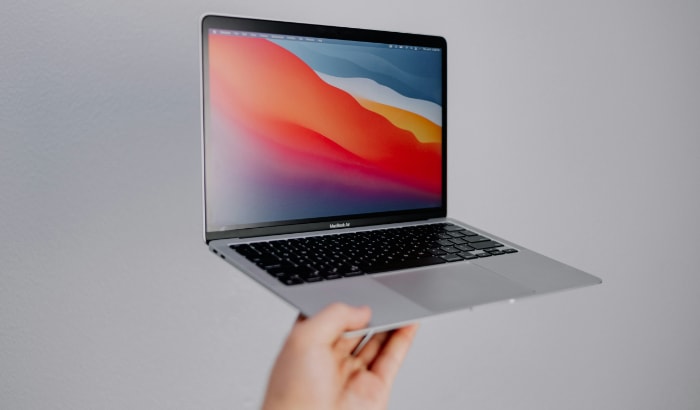Linux vs. macOS: Which Platform Fits Your Needs?

Tech enthusiasts and creative professionals often face a classic choice: embrace the limitless customization of Linux or opt for the sleek, curated experience of macOS. From open-source advocates eager to tweak every setting to artists relying on specialized software, this decision can shape how work gets done, and how enjoyable that process feels.
Pricing, software compatibility, and security all come into play, especially for those juggling creative demands, technical projects, or budget constraints.
Core Philosophies and Architectures
Every operating system carries a unique philosophy that shapes how it interacts with users, developers, and the world of technology. Linux and macOS reflect two very different approaches, each leaving a distinct mark on everything from user freedom to technical underpinnings.
Open-Source vs Proprietary Models
Linux thrives on collaboration and transparency. Maintained by a vast, global community, its source code remains open for anyone to inspect, modify, or contribute improvements.
Countless distributions, or “distros,” have grown from this model, each tailored for specific preferences and requirements. With the GNU General Public License (GPL) at its core, Linux encourages sharing and modification, making it an ideal choice for those who value customization or want to participate in the evolution of their operating system.
In contrast, macOS is crafted and maintained solely by Apple. Its proprietary nature keeps the underlying code private, restricting modifications or redistribution to ensure a consistent, controlled user experience.
While this approach delivers a polished and tightly integrated system, it also limits the degree of customization possible. Users cannot legally alter or redistribute macOS, and installing it on non-Apple hardware is explicitly prohibited by Apple’s licensing.
Licensing considerations create practical ripples for both individuals and organizations. Linux’s open-source model allows installation across a wide range of hardware, from old laptops to modern servers, often at no cost.
macOS, however, requires Apple-approved devices, integrating software and hardware into one seamless package but locking users into Apple’s ecosystem and pricing.
Kernel & Permission Systems
Technological philosophy shapes the very heart of an operating system: the kernel. Linux relies on a monolithic kernel, meaning core system services like device drivers, process management, and memory allocation all run in one unified space.
This design can deliver exceptional performance and flexibility, though it may lead to complexity in maintenance or troubleshooting. Frequent kernel updates, managed by a dedicated community, help address security issues and expand compatibility with new hardware.
macOS takes a different route with its hybrid kernel, combining elements of the Mach microkernel and BSD (Berkeley Software Distribution) kernel. Mach manages low-level tasks such as communication between processes while BSD handles higher-level Unix-like services.
This layered approach enhances system stability and security, separating certain core functions for added resilience. The hybrid kernel contributes to the familiar performance and reliability Apple devices are known for.
Permission models also differ. On Linux, file and directory permissions are central to security. Users and administrators assign read, write, and execute permissions to different files and user groups, allowing fine-grained control over who can access what.
Elevated privileges can be granted temporarily using commands like “sudo,” reducing the risk of accidental system changes.
macOS uses a combination of Unix-style permissions and role-based controls. System Integrity Protection (SIP) and sandboxing restrict access to crucial system files, forcing even administrators to undergo extra steps for certain modifications.
Built-in security frameworks aim to limit the potential damage from compromised applications or users, often at the cost of some user flexibility.
User Experience and Workflow

The look and feel of an operating system deeply influence how enjoyable and productive daily tasks become. Both Linux and macOS have developed distinctive approaches to interface design, customization options, and system performance.
Differences in workflow and visual style shape everything from first impressions to long-term user satisfaction.
Interface Customization
Linux stands out for its extraordinary flexibility in interface design. Users can choose from a variety of desktop environments, such as GNOME, KDE Plasma, XFCE, or Cinnamon, each offering unique layouts, themes, and workflows.
Those who appreciate personal expression or want a workspace fine-tuned for specific needs often find Linux’s modular approach very appealing. Options for window management, panel placement, and desktop widgets can transform the interface into something sleek, minimal, or information-rich, depending on preference.
Advanced users can even build an environment from the ground up, mixing and matching components to achieve a tailored experience.
macOS opts for a consistent and unified user interface, where every aspect is carefully curated to match Apple’s design philosophy. The Dock, menu bar, and system dialogs look and behave similarly across all Macs, giving users a sense of familiarity and comfort regardless of the device.
This unified design reduces the learning curve, allowing users to focus more on their work and less on tweaking settings. While system-wide dark mode and accessibility options are robust, extensive visual changes such as altering the window manager or heavily customizing the desktop environment are not officially supported.
Accessibility features play an important role on both platforms. macOS includes tools like VoiceOver, screen magnification, and system-wide dictation, all designed for seamless integration.
Linux distributions also offer a growing list of accessibility features, though availability may vary between desktop environments. Most modern Linux desktops now include screen readers, high-contrast themes, and keyboard navigation.
Input device support is generally reliable on both systems, but Linux sometimes requires additional configuration for newer hardware or specialized peripherals.
Performance & Multitasking
Efficiency and responsiveness are central to the appeal of any operating system. macOS is renowned for its refined animations and smooth transitions.
Apple engineers invest considerable effort in optimizing performance, resulting in fluid window management and fast application switching. Animations feel polished and the system maintains consistent responsiveness, especially on modern hardware.
Memory management in macOS is also highly advanced, with intelligent caching and resource allocation keeping multitasking snappy for most users.
Linux excels when resource optimization and performance matter most, especially on older or less powerful hardware. Many distributions are designed for lightweight operation, minimizing background processes and using minimal system resources.
Users can select desktop environments based on their system’s capabilities, choosing a minimal setup for older machines or a feature-rich experience for modern computers. Memory management in Linux allows fine-grained control, and system resources can be monitored and tuned using built-in tools or third-party utilities.
Multitasking behaves slightly differently across the two operating systems. macOS provides coherent virtual desktops, Mission Control for managing open applications, and built-in features that keep workflow organized.
Linux, depending on the desktop environment, often provides advanced window tiling, multiple workspaces, and powerful keyboard shortcuts that can be customized extensively. Users with demanding multitasking needs may find Linux’s configurability especially useful, while those who prefer a more standardized workflow may appreciate macOS’s predictability.
Software Ecosystem and Development Tools

Software availability and development tools play a defining role in how users interact with Linux and macOS. Each operating system attracts a unique set of creators, developers, and enthusiasts, shaping both the range of programs available and the depth of tools for productivity and coding.
Application Availability
Linux and macOS approach software availability in markedly different ways. Linux, with its open nature, features a rich selection of open-source tools accessible through repositories or package managers.
Command-line utilities, Docker, Git, and a broad collection of developer-centric programs are deeply integrated and frequently updated. On the other hand, proprietary applications are less common, and those that exist often require compatibility layers like Wine or Proton to work.
Creative industry standards such as Adobe Creative Cloud and Final Cut Pro remain unavailable natively, which can be a limiting factor for some professionals.
macOS users benefit from a more extensive library of commercial and proprietary software. Native support for industry-defining applications such as Adobe Photoshop, Logic Pro, Final Cut Pro, and a wide range of productivity tools gives creative professionals plenty of options.
The Mac App Store and official websites provide straightforward installation and reliable updates. Meanwhile, the open-source scene on macOS continues to expand, helped by projects like Homebrew, which brings Linux-centric tools and utilities to Apple’s platform.
Gaming on macOS has seen growth with native support for Apple Silicon and ecosystem integration, but access to the vast Windows game library remains limited compared to Linux’s Proton and Steam solutions.
The software table below highlights how each platform differs in application support:
| Category | Linux | macOS |
| Proprietary Apps | Limited (Wine/Proton) | Native (Adobe, Final Cut Pro) |
| Open-Source Tools | Rich (CLI, Docker, Git) | Growing via Homebrew |
| Gaming | Proton/Steam integration | iOS/macOS ecosystem growth |
Productivity & Development
Productivity tools and development environments shape the daily experience for both casual users and professionals. Linux shines in development and DevOps contexts, offering administrators and coders a wealth of native support.
Tools like Kubernetes, Docker, Ansible, and a full suite of programming languages are often pre-installed or easily accessible. System administrators value the fine control Linux grants for running servers, managing containers, or scripting complex automation tasks.
Open-source office suites, such as LibreOffice and OnlyOffice, provide reliable alternatives for most common document, spreadsheet, and presentation needs.
macOS provides a smooth productivity experience geared toward professionals and creatives. The system includes native applications like Pages, Numbers, and Keynote, built for integration and ease of use.
Although many cross-platform office suites are available, Apple’s offerings sometimes leave power users wanting more advanced features, though compatibility with Microsoft Office is strong. macOS supports popular development tools out of the box, alongside virtualization software like Parallels Desktop and VMware Fusion.
Developers building for iOS or macOS rely on Xcode, an exclusive and highly optimized development environment. Homebrew makes it easy to install many Linux-originated tools, helping bridge the gap for developers who need both ecosystems.
Gaming, meanwhile, is an area where Linux’s adaptability is showing new strength. Steam’s Proton technology allows many Windows games to run on Linux, giving users access to a larger gaming library than ever before.
macOS benefits from games designed specifically for the platform or for iOS, but most AAA titles remain out of reach without workarounds or cloud streaming.
Hardware, Cost, and Flexibility

Selecting an operating system often involves balancing performance, cost, and adaptability to current or future hardware. Linux and macOS each embody their own philosophy regarding device compatibility and upgradability, directly influencing how much users spend and how much control they have over their machines.
Pricing & Hardware Options
Linux stands out with its zero-cost entry. Most distributions are available for free, eliminating licensing fees and reducing the barrier to experimentation.
The real power of Linux comes from its compatibility with nearly any hardware configuration. Whether running on a brand-new gaming rig or a decade-old laptop, Linux adapts easily, frequently extending the useful life of devices that might otherwise end up obsolete.
This flexibility makes Linux attractive for students, budget-conscious users, and anyone looking to repurpose older computers for specialized tasks or lightweight computing.
macOS, in contrast, is tightly bound to Apple’s own hardware. Purchasing a Mac means investing in premium build quality, high-resolution displays, and carefully engineered design, but also tying software purchasing decisions to Apple’s pricing structure.
Apple’s strict policies prohibit installing macOS on non-Apple hardware, closing off the option of customizing or building your own Mac-like system. Upgrading hardware typically requires buying a new device, as Apple regularly phases out support for older models in favor of their latest technology.
Upgrade & Configuration
Choice and adaptability define Linux’s approach to hardware upgrades and configuration. Users can easily swap out components, such as RAM, hard drives, or graphics cards, and expect continued compatibility without the need for specialized drivers.
If a device fails, replacing it is straightforward, and the operating system can often be moved to new hardware with little fuss. Reinstalling Linux or switching between distributions is usually a quick process, supported by a robust ecosystem of community-created driver packages.
macOS is built for cohesion rather than customization. Apple’s “it just works” philosophy results in seamless integration between software and hardware, but it restricts the options for hardware modification.
Recent Macs, especially those with Apple silicon, are not designed for user upgrades, so expanding storage or memory usually means investing in a new device. Reinstallation of macOS is streamlined and generally reliable, thanks to built-in recovery tools, but users have little control over system drivers.
Apple handles driver management behind the scenes, reducing complexity but also limiting flexibility.
Security, Privacy, and Support

Protecting user data, defending against threats, and ensuring reliable assistance are crucial priorities for any operating system. Linux and macOS both offer robust security foundations, but their approaches reflect different philosophies about user control, data privacy, and the nature of support.
Threat Response & Hardening
macOS emphasizes security through a curated ecosystem. The App Store acts as a gatekeeper, vetting software for malware and enforcing strict privacy standards.
While users can install apps from outside the App Store, macOS actively warns about unsigned or unverified software. Regular system updates and automatic security patches keep vulnerabilities in check, while Apple’s System Integrity Protection (SIP) adds another layer of defense.
SIP restricts access to critical system files, even from users with administrative privileges, significantly reducing the attack surface and limiting the damage that compromised applications can cause.
Linux relies on transparent, community-driven threat response. Security patches and bug fixes are collaboratively developed by contributors around the globe and pushed rapidly through distribution-specific channels.
Open-source principles mean vulnerabilities are often discovered and addressed quickly. Linux’s security model is deeply rooted in file and process permissions, giving users control over who can read, write, or execute files.
Tools like SELinux and AppArmor allow advanced hardening for critical applications and environments, often used in server or enterprise settings. The open nature of Linux security means users and administrators must remain proactive, choosing reputable software sources and configuring firewalls or access controls as needed.
Data Control & Enterprise Support
Data privacy and integration play a significant role in the modern computing experience. macOS features seamless cloud integration through iCloud, making it easy to sync files, photos, and device backups across Apple hardware.
Convenience comes with tradeoffs, as data is stored on Apple’s servers according to their privacy policies. For users and organizations with strict data sovereignty requirements, this model may feel restrictive.
Linux puts data ownership firmly in the hands of its users. While various Linux distributions offer compatibility with major cloud services, many users and enterprises choose to run self-hosted solutions, such as Nextcloud or ownCloud.
This approach enables total control over data flow and storage, mitigating third-party risks and aligning with stringent privacy needs. Flexibility in cloud integration empowers organizations to meet specific compliance or security standards.
Support options differ significantly across the two platforms. Apple provides direct customer support through AppleCare, covering both hardware and software with dedicated hotlines and in-store service.
Updates and patches are delivered by Apple, reducing the complexity for the end user and offering peace of mind for individuals or businesses willing to pay for premium assistance.
Linux support is more diverse. Free help is abundant through community forums and documentation, while professional support contracts are available from companies like Red Hat, Canonical (Ubuntu), and SUSE.
Paid enterprise options cover everything from 24/7 phone support to on-site troubleshooting, making Linux a competitive choice for organizations that need rapid, responsive help but also want to avoid vendor lock-in.
Conclusion
Finding the right operating system is all about balancing personal and professional priorities. Linux appeals to those who crave flexibility, want full control over their environment, or need to keep costs low.
Its open-source nature makes it a favorite for developers, tinkerers, and anyone looking to revive older hardware or build a custom setup from scratch. On the other hand, macOS shines for users who value seamless integration, strong support for creative applications, and a cohesive, polished user experience.
Apple’s closed ecosystem locks software and hardware together, providing reliability and refinement at a premium price.
Consider your daily workflow, preferred software, budget, and appetite for customization. Developers often gravitate toward Linux for its native support of programming tools, while creatives may find macOS’s exclusive apps and superior hardware integration hard to resist.
Anyone sensitive to security and privacy should weigh the pros and cons of open-source transparency versus Apple’s curated protections. Budget-focused users can stretch the life of aging devices with Linux, whereas those who want a worry-free, all-in-one package might accept Apple’s higher cost for peace of mind.
Looking ahead, cross-platform tools are narrowing the gap between operating systems. Applications like VS Code, Firefox, and cloud-based suites reduce the impact of OS-specific limitations, offering more freedom to switch or use multiple platforms side by side.
In the end, the best choice comes down to which strengths matter most for your goals. Weigh the trade-offs, try out the options if possible, and let your needs guide your decision.
Whichever route you take, both Linux and macOS have a lot to offer.


